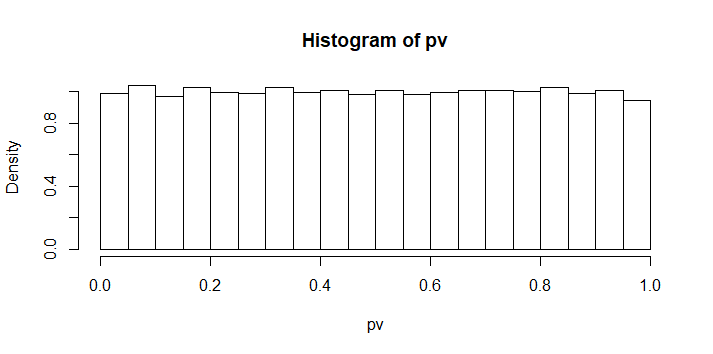I have some data I'm analyzing, that looks something like this:
exampleDF <- data.frame(s1 = rnorm(10), s2 = rnorm(10), s3 = rnorm(10), s4 = rnorm(10), s5 = rnorm(10))
> exampleDF
s1 s2 s3 s4 s5
1 -1.8167533 1.7702279 -0.71073850 1.4676012 0.11589850
2 -0.9283220 -0.6028665 -0.12541521 -0.8027177 1.01037162
3 -1.8452510 0.2370927 0.02927646 0.9991479 0.23636339
4 -1.1728676 0.8326918 1.50497972 -0.2297063 0.08417196
5 0.0526901 0.4537119 -0.95115552 -0.6845546 -0.83615065
6 1.3307005 -2.8312321 0.09037220 -2.1499721 -0.30079861
7 2.0669124 -0.3826490 0.03627688 -0.7294662 -0.13742160
8 0.4938200 0.1285557 -0.06457083 0.4582254 0.03022469
9 -1.5334708 -0.1054318 0.93166124 0.4045524 1.81366144
10 -0.1566743 0.9812490 -0.03122229 -2.1211528 0.65671646
Here, A = {s1,s2,s3} is all one experimental group and B = {s4,s5} is another group.
What I'd like to do, is go through each row, and compare the means of A and B to see if they are significantly different. i.e. for each row, compare the means of {s1,s2,s3} and {s4,s5}.
So for each row, I'd like a p-value so I can decide if the two groups are statistically significant. However, my actual data has ~20,000 rows, so I think I'm supposed to correct for multiple testing to reduce the Type 1 error rate, right? What test should I use, and how do I do it in R?
I'm not sure how to go about setting up the design matrix, and whether I should use the t.test() function in R, or if there's a more appropriate function?


